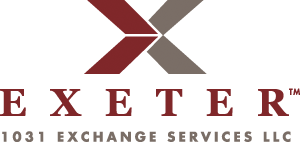1031 Exchange Quick Facts
1031 Exchange Structures
Simultaneous or Concurrent 1031 Exchange
The relinquished property and the like-kind replacement property close (settle) at the same time in a Simultaneous 1031 Exchange or Concurrent 1031 Exchange.
Forward or Delayed 1031 Exchange
You close on your relinquished property first and subsequently purchase (close on) your like-kind replacement property within the prescribed deadlines in a Forward or Delayed 1031 Exchange (also referred to as a "Starker" Exchange).
Reverse 1031 Exchange
The like-kind replacement property is acquired and "parked" by the 1031 Exchange Qualified Intermediary (“QI”) first and the relinquished property is subsequently sold later within the prescribed 1031 Exchange deadlines in a Reverse 1031 Exchange.
Build-to-Suit (Improvement or Construction) 1031 Exchange
Your 1031 Exchange proceeds from the sale of your relinquished property are used to acquire like-kind replacement property and some of the left over 1031 Exchange funds are used to improve the replacement property in a Build-To-Suit 1031 Exchange.
Personal Property 1031 Exchange
Personal property (i.e. non-real estate) can also be exchanged for other personal property of like-kind or like-class in a Personal Property 1031 Exchange.
1031 Exchange Qualifications
Qualified Intermediary
You must select your Qualified Intermediary ("QI") and have your Qualified Intermediary assigned into your relinquished property (sale) transaction and your replacement property (purchase) transaction before the transactions close in order to preserve the tax-deferred benefits of a 1031 Tax Deferred Exchange.
Qualified Use Property
Your relinquished property (sale) and your like-kind replacement property (purchase) must be held for rental or investment or used in your trade or business in order to qualify for 1031 Exchange treatment. You must have the intent to hold the properties for investment. Properties held for sale will not qualify for 1031 Exchange treatment.
Like Kind Property
The like-kind replacement property acquired in your 1031 Exchange must be "like-kind" to the relinquished (sold) property. ANY real property is like-kind to ANY other real property as long as they are both held for rental or investment or used in your business. Like-kind does NOT mean condo for condo or apartment for apartment.
1031 Exchange Reinvestment Requirements
Trade Equal or Up In Value
The investor must exchange equal or up in value based on the net sales price and total purchase price so that the total purchase price of your like-kind replacement properties is equal to or greater than the net sales price of your relinquished properties. It is important to note that it has nothing to do with your equity.
Reinvest 100% of Net Proceeds
100% of the investor's net proceeds or cash proceeds generated by the sale of the relinquished property must be reinvested into like-kind replacement property. Cash can be pulled out, but it will always be taxable.
Obtain Equal or Greater Debt
The difference between the total purchase price(s) and the net proceeds reinvested in the like-kind replacement properties will always be the correct amount of new debt to place on the acquired properties, unless the investor wishes to put more cash out of pocket in to the transaction and obtain less debt.
1031 Exchange Deadlines
45 calendar days to identify potential like-kind replacement property.
180 calendar days to complete the 1031 Exchange.
1031 Exchange Identification Rules
3 Property Rule
Investors may identify up to three (3) potential like-kind replacement properties, without regard to their fair market value. The limit is on the number of properties.
200% of FMV Rule
Investors may identify any number of potential like-kind replacement properties, but the total fair market value identified cannot exceed 200% of the fair market value of the relinquished (sale) properties. The limit is on the fair market value of the properties.
95% Exception
Investors may identify as many like-kind replacement properties as he or she wants, but must actually acquire and close on 95% of the fair market value identified.
